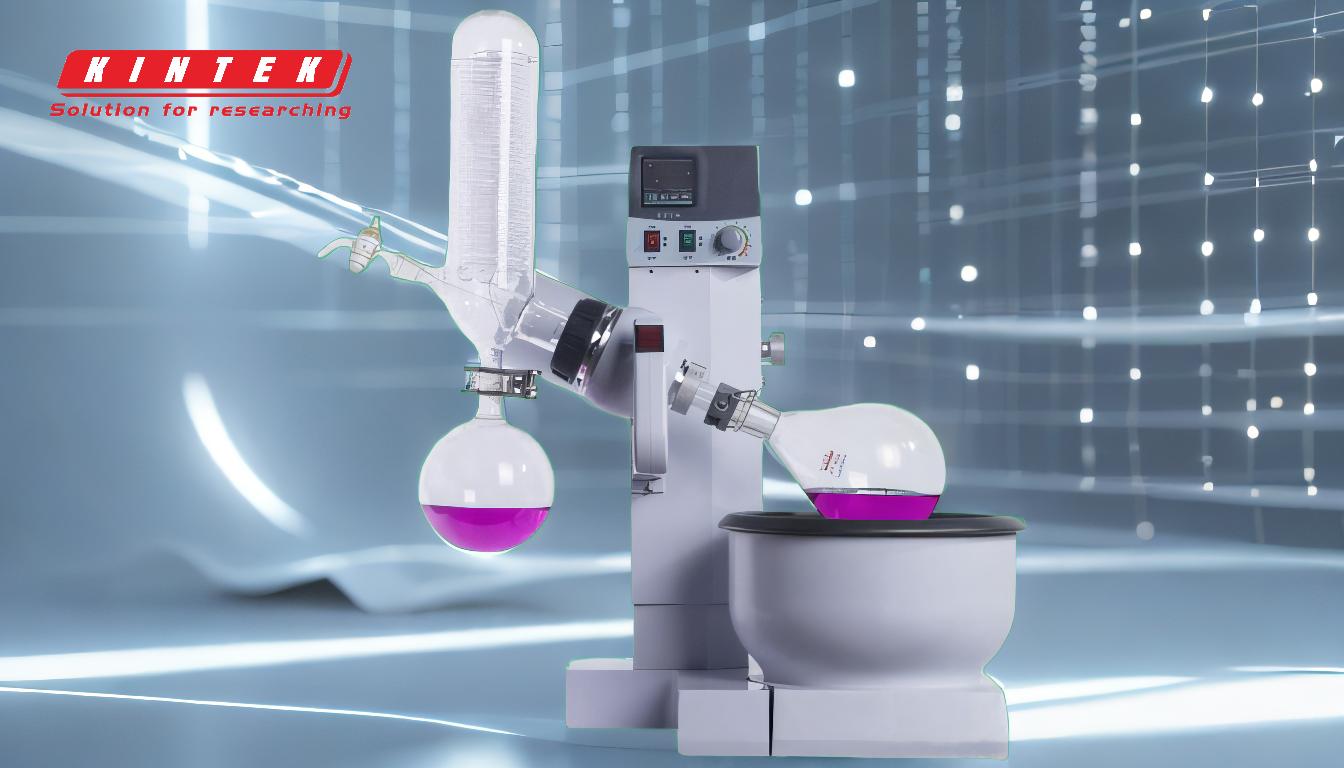Rotary evaporators are widely used in laboratories and industries for extracting and concentrating compounds by evaporating solvents at reduced pressures and controlled temperatures. The process involves creating a vacuum to lower the boiling point of the solvent, rotating the flask to increase the surface area for evaporation, and condensing the evaporated solvent for collection. This method is particularly effective for preserving heat-sensitive compounds like cannabinoids, flavonoids, and terpenes while removing unwanted substances like lipids and waxes. Below is a detailed explanation of the key steps and considerations for extracting with a rotary evaporator.
Key Points Explained:

-
Preparation and Setup
- Ensure all components of the rotary evaporator (rotovap) are clean and properly assembled.
- Connect the round-bottom flask containing the solution to the rotovap, securing it with a clip or bump trap to prevent spills during rotation.
- Fill the water bath to the appropriate level and set it to the desired temperature, typically below the boiling point of the solvent to avoid degradation of heat-sensitive compounds.
- Ensure the water condenser is functioning and has a steady flow of cooling water to condense the evaporated solvent effectively.
-
Creating a Vacuum
- Turn on the vacuum pump and gradually increase the vacuum strength. This step lowers the boiling point of the solvent, allowing it to evaporate at lower temperatures.
- Monitor the system for signs of bumping (violent boiling), which can cause the solution to splash into the condenser. If bumping occurs, re-pressurize the system slightly by adjusting the vacuum.
-
Rotation and Evaporation
- Start the rotation of the flask at a speed appropriate for the sample volume. A typical rotation speed ranges from 50 to 160 revolutions per minute (rpm).
- The rotation ensures an even coating of the solution on the flask's inner surface, maximizing the evaporation area and efficiency.
- Lower the flask into the water bath to apply gentle heat, facilitating the evaporation process.
-
Monitoring the Process
- Continuously monitor the flask for solvent evaporation and condensation in the receiving flask.
- Adjust the vacuum strength and water bath temperature as needed to maintain a steady evaporation rate without causing bumping or overheating.
-
Completion and Shutdown
- Once all the solvent has evaporated, raise the flask out of the water bath and stop the rotation.
- Turn off the vacuum pump and carefully release the vacuum by opening the stopcock to return the system to atmospheric pressure.
- Remove the flask from the rotovap and collect the concentrated extract.
-
Post-Process Considerations
- Clean all components of the rotovap thoroughly to prevent cross-contamination in future experiments.
- Store the extracted concentrate appropriately, ensuring it is protected from light, heat, and moisture to maintain its stability and potency.
By following these steps, a rotary evaporator can efficiently extract and concentrate compounds while preserving their integrity. This method is particularly valuable in applications like cannabis extraction, where maintaining the quality of cannabinoids, terpenes, and other bioactive compounds is critical. Proper setup, monitoring, and shutdown procedures ensure safe and effective operation of the rotary evaporator.
Summary Table:
| Step | Key Actions |
|---|---|
| Preparation & Setup | Clean and assemble rotovap, set water bath temperature, ensure condenser flow. |
| Creating a Vacuum | Gradually increase vacuum strength to lower solvent boiling point. |
| Rotation & Evaporation | Rotate flask at 50-160 rpm, lower into water bath for gentle heating. |
| Monitoring | Adjust vacuum and temperature to maintain steady evaporation. |
| Completion | Raise flask, stop rotation, and release vacuum to collect concentrate. |
| Post-Process | Clean components and store extract properly to maintain stability. |
Optimize your extraction process with a rotary evaporator—contact our experts today for guidance!










